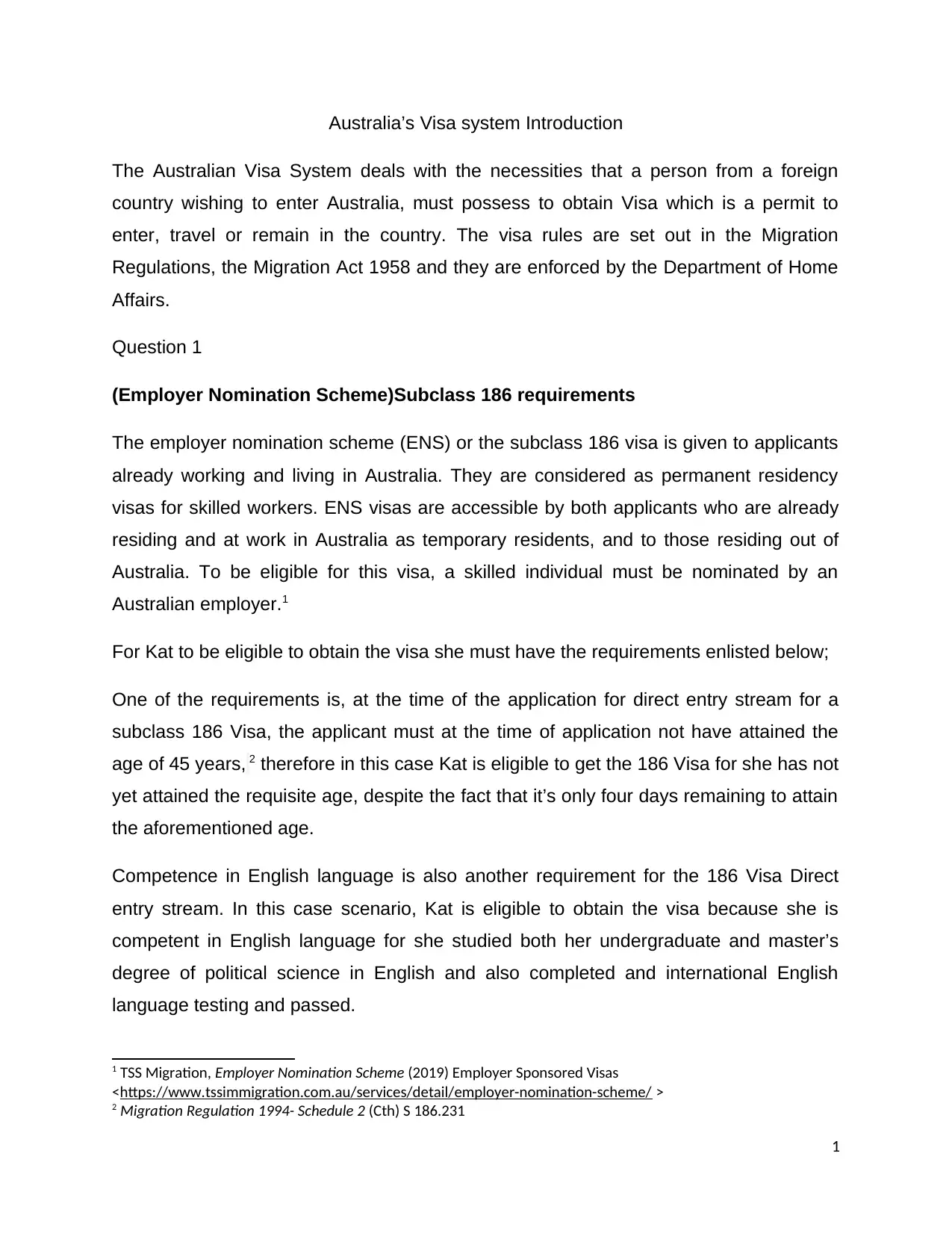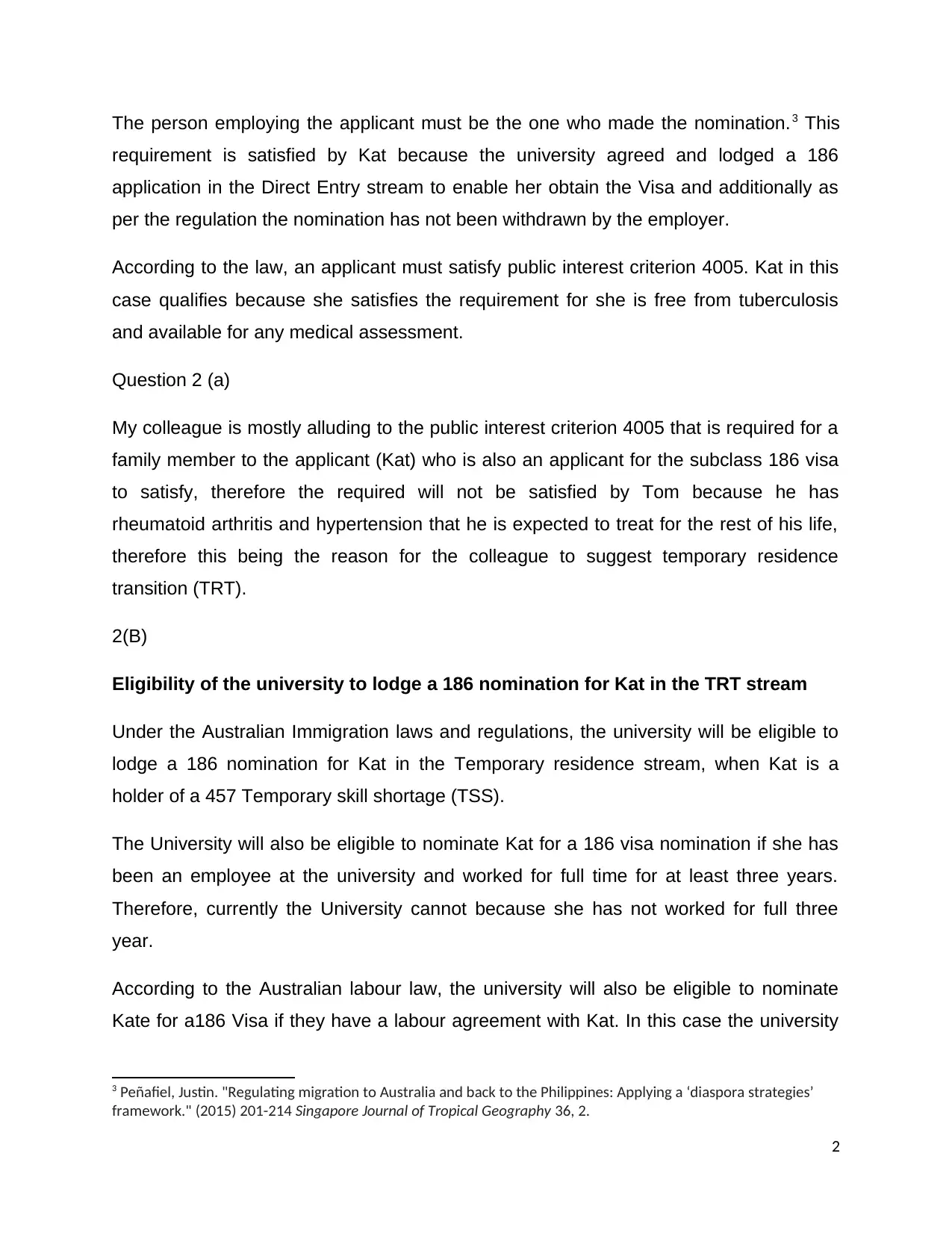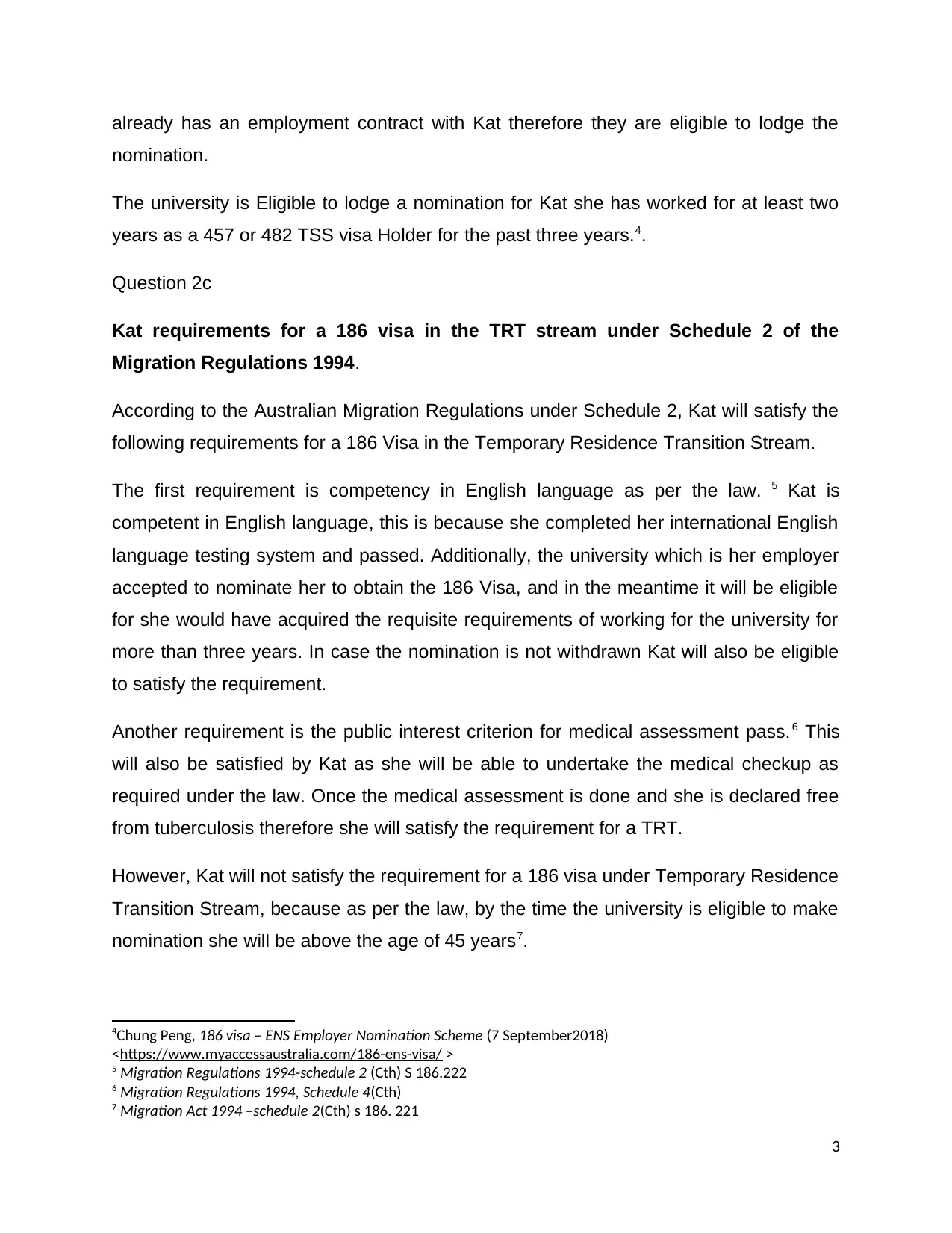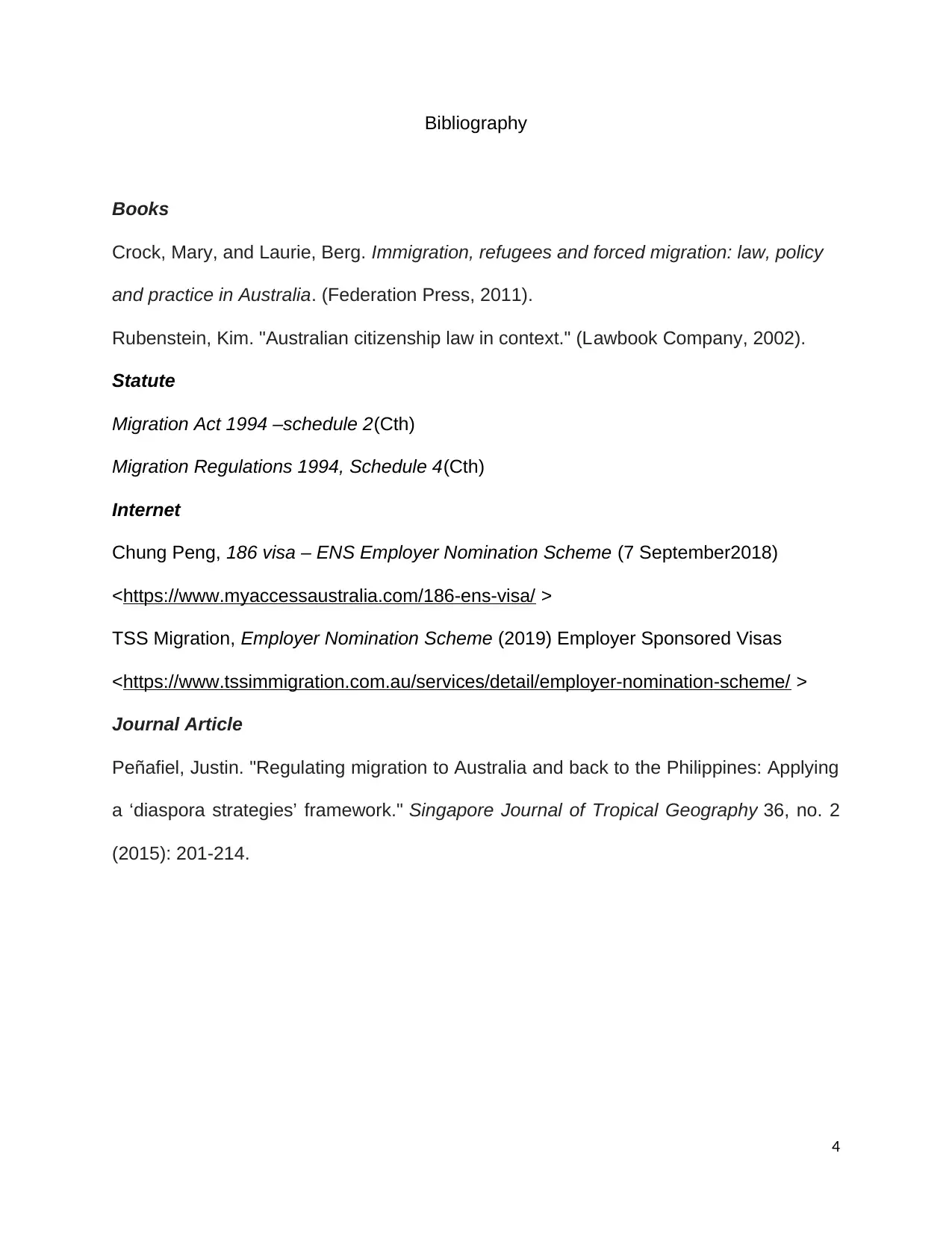Parkville University - Australia Visa System Case Study: Subclass 186
VerifiedAdded on 2022/11/24
|4
|1087
|445
Case Study
AI Summary
This case study examines the Australian visa system, specifically focusing on the subclass 186 visa, also known as the Employer Nomination Scheme (ENS). The scenario involves Kat, an Italian citizen working as a Research Fellow at Parkville University of Technology, and her husband, Tom, who initially held a subclass 457 visa. The case analyzes Kat's eligibility for the subclass 186 visa, considering age, English language proficiency, employer nomination, and public interest criteria. It also addresses the implications of Tom's health conditions (rheumatoid arthritis and hypertension) on his and Kat’s visa applications, particularly concerning the public interest criterion 4005. The analysis explores the university's eligibility to nominate Kat under both the direct entry and temporary residence transition (TRT) streams, considering factors like employment duration and labor agreements. The case delves into the specific requirements Kat must meet for a 186 visa under the TRT stream, including English language proficiency, employer nomination, and medical assessments, while also highlighting the age limitations. The assignment also includes a bibliography referencing relevant legal resources, including legislation, books, and journal articles.
1 out of 4










![[object Object]](/_next/static/media/star-bottom.7253800d.svg)